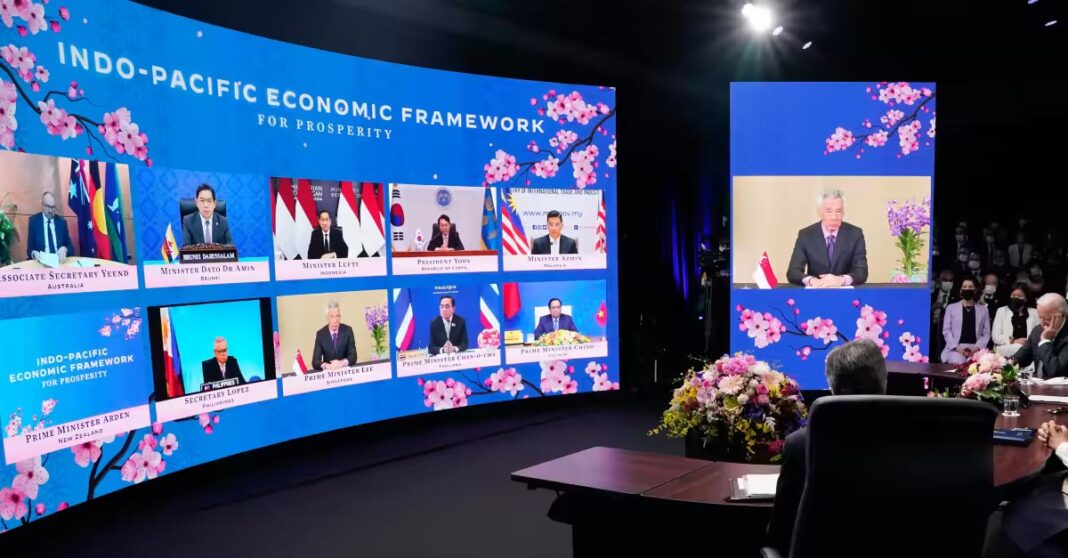US President Joe Biden has formed an economic framework with 12 Indo-Pacific nations officially named the Indo-Pacific Economic Framework.
Five years after his predecessor pulled out of the American-negotiated Trans-Pacific partnership, United States President Joe Biden has formed the new economic framework with Indo-Pacific nations including India, Thailand, and Vietnam.
Altogether the alliance accounts for about 40% of the world’s economy, but is still smaller than China’s Regional Comprehensive Economic Partnership, which contains 15 nations and is the biggest trade alliance in the world.
The Indo-Pacific Economic Framework for Prosperity will not lower trade tariffs like the Trans-Pacific Partnership, and will focus on four aims: securing supply chains, expanding sustainable energy, fighting corruption, and promoting digital trade.
“We’re writing the new rules for the 21st-century economy,” Mr. Biden said on Monday in Tokyo during the launch of his new trade bloc.
“We’re going to help all of our country’s economies grow faster and fairer.”
He sat with Prime Minister Narendra Modi of India and Prime Minister Fumio Kishida of Japan while other leaders attended the launch by video conference. The trade agreement is part of Biden’s broad strategy in the region, playing catchup after a gap left by Trump allowed other powers to exert greater influence.
Each participating country in the Indo-Pacific Partnership will have the choice of which of the four aims to focus on and will not be expected to commit to deals within each goal area.
The United States initiated the partnership, along with Australia, Brunei, India, Indonesia, Japan, the Republic of Korea, Malaysia, New Zealand, the Philippines, Singapore, Thailand, and Vietnam.
Negotiations between the 13 countries are expected to begin in July and be finished within a year and a half.



